January 2024 Business Meeting Summary
by Andy Thompson, MSDC Secretary
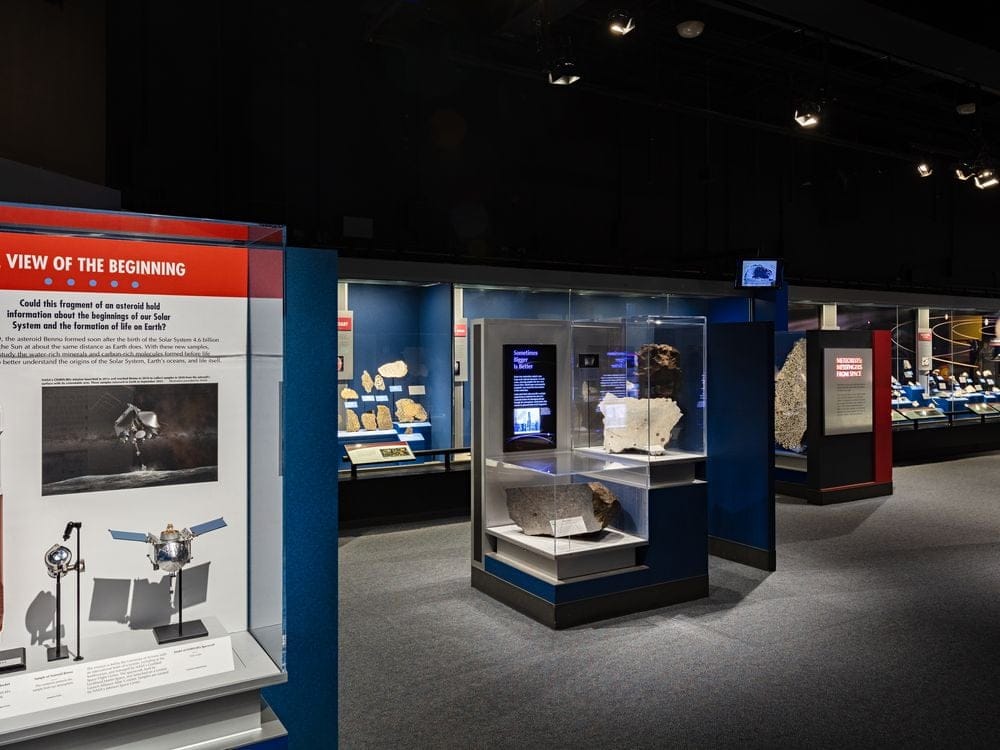
President Kenny Reynolds kicked off MSDC’s first meeting the new year by thanking everyone for attending, including two former presidents for their earlier service. He then asked for a motion to approve the November Business Meeting Report as published in the December issue of Mineral Minutes. The motion to accept was made, seconded, and approved without need for discussion.
Election of MSDC Officers for 2024
Andy, as Secretary, reviewed this year’s MSDC’s process for electing its seven Board of Directors (BOD). Given unusual recent circumstances, including members having Covid, being on travel, or on the injured reserve list, Andy served as the ad hoc Nominating Committee. Members who volunteered to serve on the BOD in 2024 became the slate for MSDC’s 2024 election of officers.
Six of the seven 2023 board members were willing to return for 2024, with the one open seat being for a director. Brian Silver, who previously filled that one-year slot in 2023, volunteered to serve for the coming three-year term, as summarized below.
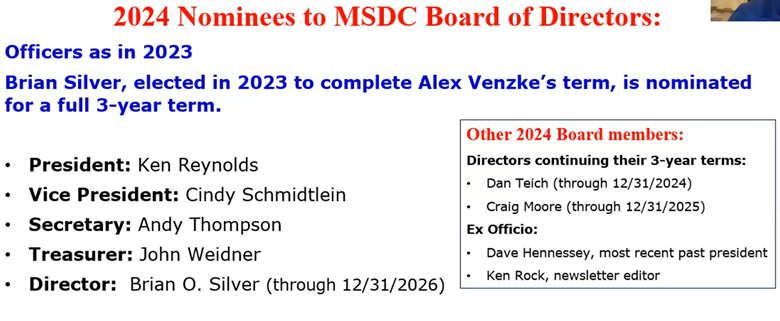
No additional names were proposed for the 2024 BOD election. A motion was made to accept the slate as presented and the motion was seconded. Members offered no further discussion, and the above nominees were elected as proposed, with Dan and Craig returning for their one- and two-year remaining terms. President Kenny Reynolds thanked everyone for their service in 2023 and for their willingness to continue serving in 2024.
The BOD encourages all MSDC members to think about ways to volunteer to help the club. Watch for an article in MSDC’s February Mineral Minutes newsletter with suggestions for ways you could consider helping the club.
Proposal to Fund The Foshag 2024 Awardee
Each year MSDC funds university-based earth sciences research conducted by a George Washington University geology major during the coming summer. Dr. Richard Tollo has coordinated this research for the past 23 years. For 2024 he has proposed Gabriela DeSanto for the award.
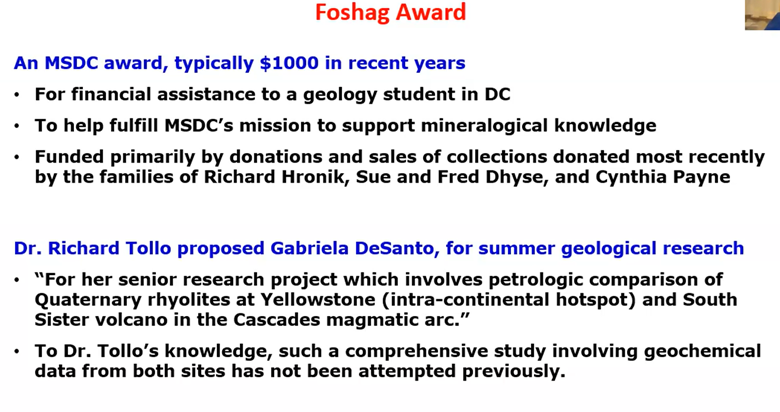
Members made a motion to approve the donation as stated, and the motion was seconded and approved by all. Cindy will work with Dr. Tollo and Ms. DeSanto to coordinate her presenting to MSDC in the late Spring, with a brief overview of her proposed project. Members expressed their appreciation to Dr. Tollo for supporting MSDC’s mission of furthering mineralogical education.
Eastern Federation’s Wild Acres May 13-19, 2024
Andy and others shared their positive experiences at this annual event. Cindy encouraged all who are interested to send in their reservation ASAP. She missed attending last year due to her late submission. Further information can be found below:
Google: EFMLS.ORG & click on “Current Newsletter” (https://efmls.org/news/current-newsletter/), or simply click here.

Geology in the News
Kenny then invited members to share any interesting mineralogical news they recently encountered in the media or articles. Editor Ken said there has been lots of geological news lately. He thanked those members who sent him stories and links which he then publishes. Ken encouraged everyone to send him interesting items they discover in their perusal of the news.
On a different note, Jeff asked if anyone knew of a person skilled in lapidary who might help a woman needing to have her rocks tailored to be a better fit to therapeutically help her clients. Notify Jeff to share appropriate lapidary contact information.
Kathy, Sam, and others discussed the Smithsonian’s new display, with amplification, of the Bennu asteroid tiny dust (size of a pea). Smithsonian’s geologist Tim Rose, shared that for the past six weeks, he and fellow Smithsonian NMNH researchers have been “doing nothing else” but probing the secrets of Bennu. Their mineral sample’s size, he said, fits on the head of a pin, which is more than adequate for today’s researchers and high-tech analytic tools. Tim noted that 12 such research grains could fit on the head of a pin. When the NMNH research team has concluded their findings, Tim said he would be happy to share their results with MSDC.
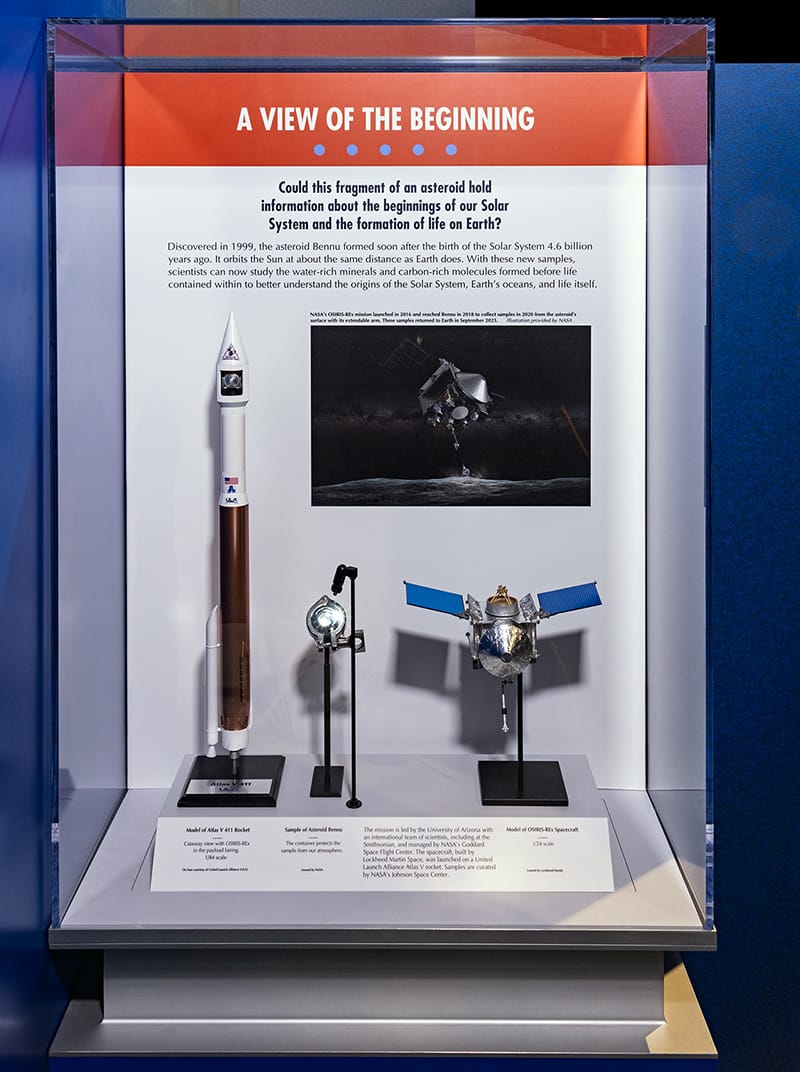
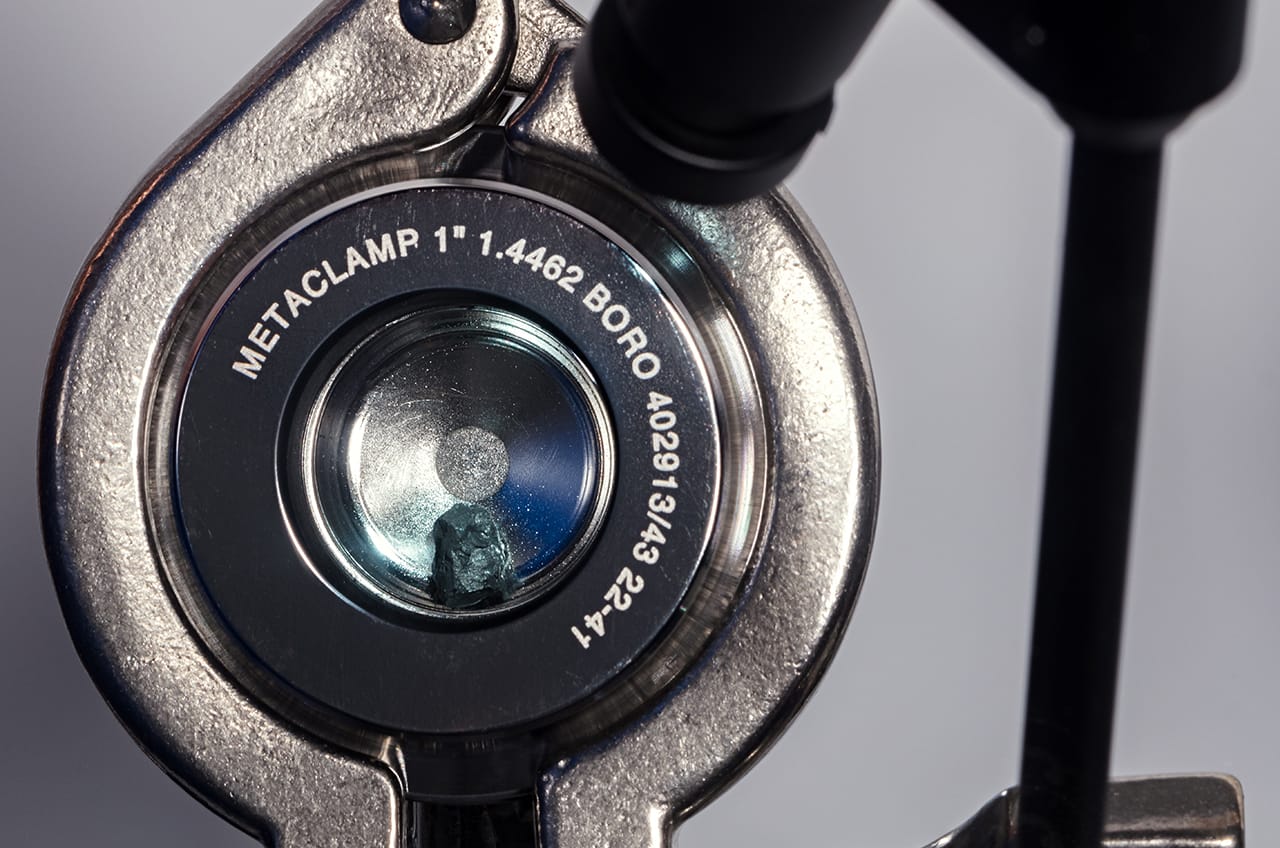
Another attendee, with a facetious expression, told of the “great excitement” announced by a newscaster who reported amazing findings. A recent high-tech analysis of moon rock samples collected 51 years ago by Apollo 17 had yielded information pointing to the Moon’s origin being 40 million years older than previously believed. Some attendees were puzzled as to why there might be any excitement given the generally accepted belief that the Moon is 4.46 billion years old, plus or minus 31 million years, as suggested by the following relevant footnote.
Geochemical Perspectives Letters v27 | https://doi.org/10.7185/geochemlet.2334
Published 23 October 2023); The crystallization ages of lunar samples provide critical constraints on the minimum formation age of the Moon and its early evolution. Zircon crystals from Apollo 17 lunar impact melt breccia 72255 preserve ancient domains with a concordant average uranium-lead radiometric date of 4460 ± 31 Ma (Zhang et al., 2021), the oldest lunar zircon yet reported.
Members also reported earthquakes near (Rockville MD) and far (Japan). The Japanese quake caused extensive loss of life and damage. With regard to the small quake in the Rockville area, Sue recommended that residents report to the USGS the extent of any earthquake shaking they felt, given that such Citizen Science reports are appreciated and carefully collected by the agency.
Kathy reported the Bennu grain with magnification was now on display at the Smithsonian’s NMNH. That instigated a discussion of the progress NMNH’s Department of Mineralogy has been making on its analysis. NASA’s Osiris-REx mission returned samples from the Bennu asteroid in September of 2023. Stan contributed information about the micro size of the Bennu sample.
Tim Rose, who manages the Department’s Analytical Laboratories and is MSDC’s sponsor within the Smithsonian, spoke up and explained that for the last six weeks, he and his fellow Smithsonian researchers have been conducting analyses on the pin-head size Bennu granular sample. He explained that despite the micro nature of the sample, given the capability of today’s analytic instruments, that minute size is more than adequate for today’s research purposes. Tim assured everyone the data will be shared when the study is completed.
Upcoming MSDC Program in February
Kenny then called on MSDC’s Vice President for Programs, Cindy, who shared that next month’s presentation will be from USGS geologist Rebecca Stokes, Ph.D. Further information is available elsewhere in this Mineral Minutes issue.
Conclusion
With no further business to discuss, Kenny then called for and received a motion to close the meeting. He then turned the microphone over to Cindy to introduce the evening’s presenter.
